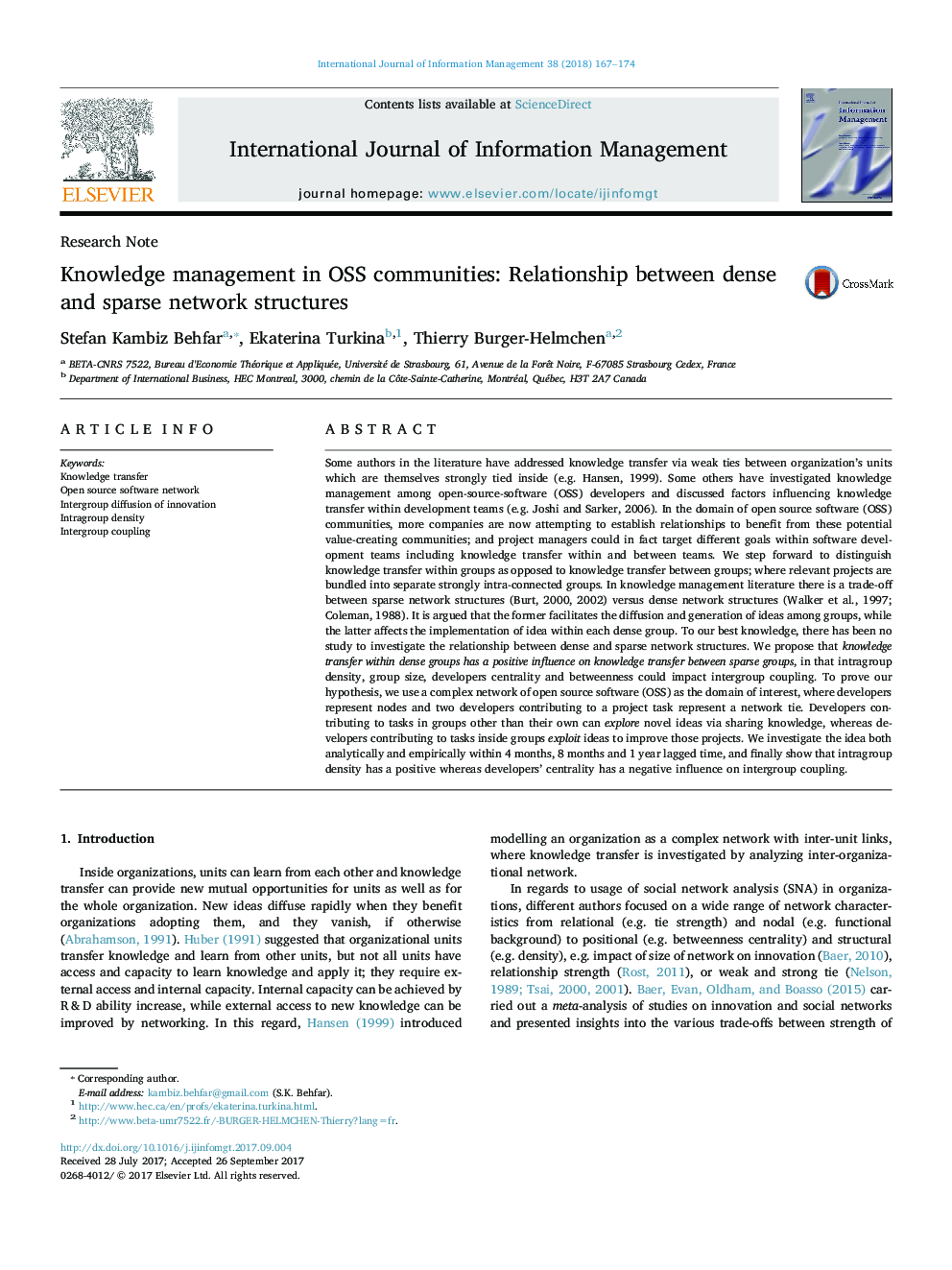| Article ID | Journal | Published Year | Pages | File Type |
|---|---|---|---|---|
| 5110717 | International Journal of Information Management | 2018 | 8 Pages |
Abstract
Some authors in the literature have addressed knowledge transfer via weak ties between organization's units which are themselves strongly tied inside (e.g. Hansen, 1999). Some others have investigated knowledge management among open-source-software (OSS) developers and discussed factors influencing knowledge transfer within development teams (e.g. Joshi and Sarker, 2006). In the domain of open source software (OSS) communities, more companies are now attempting to establish relationships to benefit from these potential value-creating communities; and project managers could in fact target different goals within software development teams including knowledge transfer within and between teams. We step forward to distinguish knowledge transfer within groups as opposed to knowledge transfer between groups; where relevant projects are bundled into separate strongly intra-connected groups. In knowledge management literature there is a trade-off between sparse network structures (Burt, 2000, 2002) versus dense network structures (Walker et al., 1997; Coleman, 1988). It is argued that the former facilitates the diffusion and generation of ideas among groups, while the latter affects the implementation of idea within each dense group. To our best knowledge, there has been no study to investigate the relationship between dense and sparse network structures. We propose that knowledge transfer within dense groups has a positive influence on knowledge transfer between sparse groups, in that intragroup density, group size, developers centrality and betweenness could impact intergroup coupling. To prove our hypothesis, we use a complex network of open source software (OSS) as the domain of interest, where developers represent nodes and two developers contributing to a project task represent a network tie. Developers contributing to tasks in groups other than their own can explore novel ideas via sharing knowledge, whereas developers contributing to tasks inside groups exploit ideas to improve those projects. We investigate the idea both analytically and empirically within 4 months, 8 months and 1Â year lagged time, and finally show that intragroup density has a positive whereas developers' centrality has a negative influence on intergroup coupling.
Keywords
Related Topics
Social Sciences and Humanities
Business, Management and Accounting
Management Information Systems
Authors
Stefan Kambiz Behfar, Ekaterina Turkina, Thierry Burger-Helmchen,
